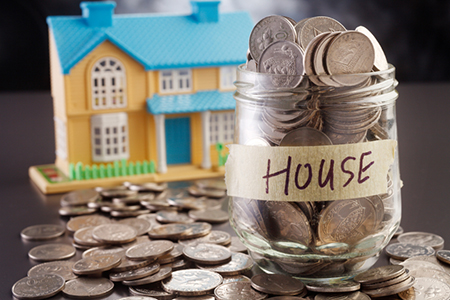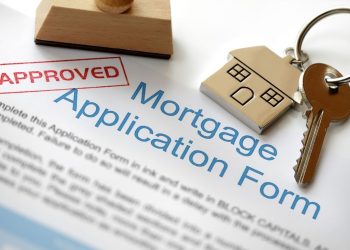 Recently, one of the most closely-watched housing market indicators, the S&P/Case-Shiller Home Price Indices, was released, and the numbers largely confirmed what the market has known for a while: U.S. home prices continue to climb at a moderate pace.
Recently, one of the most closely-watched housing market indicators, the S&P/Case-Shiller Home Price Indices, was released, and the numbers largely confirmed what the market has known for a while: U.S. home prices continue to climb at a moderate pace.
More importantly, there is a strong consensus among several widely followed home price indicators – including the Corelogic Home Price Index, FNC Residential Price Index, FHFA House Price Index, and S&P/Case-Shiller HPI – that prices nationwide are appreciating at a steady rate of about 5-6 percent annually amid a growing U.S. economy and low interest rates.
As another busy spring homebuying season is almost upon us, continued price growth is certainly encouraging to those who plan to buy their very first home, relocate to a different city, or simply to trade an existing home for a newer and bigger one. And, if past boom-and-bust housing cycles have revealed anything about homebuying behavior, it is the fact that psychologically and economically, people prefer to buy homes when prices are rising than when they are falling.
The spring housing market appears to be off to a good start. The latest seasonally unadjusted February existing-home sales from the National Association of REALTORS indicated total sales grew 6.4 percent from a year ago. (Source: American Enterprise Institute, “Are Existing Home Sales Fizzling or Sizzling?” by Tobias Peter, March 21, 2016.) After adjusted for seasonality, sales were 2.2 percent higher than last year, according to NAR’s own press release.
Similarly, February’s new residential housing starts were more than 30 percent above the same period a year ago, of which the growth of 1-unit structure starts has been positive for 11 consecutive months now. February’s new building permits were up 37 percent from a year ago.
On the income side, the latest figure from the U.S. Bureau of Economic Analysis indicated wages and salaries rose a modest 4.5 percent in January 2016 from a year ago. Wage growth in 2014 and 2015 reached 5.1 percent and 4.6 percent as the U.S. economy expanded moderately, which is just a tad slower than the 5.6 percent growth rate recorded for home prices throughout 2015. Better yet, real personal income – adjusted for price changes in various consumption goods and services including housing cost – rose a moderate 3.5 percent in 2015.
Of course, any attempt to assess home affordability would be incomplete if housing credit conditions are not considered, as many American families rely heavily on high-leveraged mortgage financing for home purchase.
Obviously, rising home prices erode affordability if all else is the same. Fortunately for potential buyers out there, all else is not the same. The wages and income picture is one example.
Something else has changed too. Since sentiments towards affordability and how it has gotten in the way of a sustainable housing recovery seem rather concerned about first-time buyers, let’s start with first-time buyers.
First, let’s be reminded that only 30-33 percent of all homes that are purchased are by non-repeat buyers. And the number could be even lower if foreign buyers and investors are considered, especially in many of the country’s largest cities.
Secondly, consumer research suggests for first-time home buyers, affordability is really, and mostly, about being able to save enough money for the upfront down payment and closing costs, which understandably underscores Fannie and Freddie’s offering of high-LTV mortgages to first-time buyers and low- and moderate-income households. And lenders are catching on quickly, leveraging off GSE’s investment in the loans by offering their own 3 percent down mortgages – and no mortgage insurance required.
Surely, empowered with such never-seen-before access to housing credit – and not to mention average mortgage rates have remained at record lows below 4 percent – we have a good reason to expect this spring’s first-time home buyers will become an important market driver at the margin.
Now, let’s move on to the remaining dominant group of repeat buyers. What do rising home prices mean to these repeat buyers who are responsible for about 67-70 percent of all homes sales? Not surprisingly, it means rising affordability as their investment grows in value; and, with more equity to be extracted when selling existing homes, it also means possibilities of larger down payment towards the trade-up or relocation homes.
Further, with rising prices and more homes in positive equity, repeat buyers will likely sell existing homes relatively faster in exchange for liquidity toward the next house, free of the burden from having to pay two mortgages at the same time. In January, upon re-sale homeowners nationwide realized an average of 20 percent price appreciation from the original purchase price. According to Corelogic, only 8.5 percent of all residential properties with an outstanding mortgage were of negative equity at the end of 2015.
So, there really are several moving parts to affordability, and the relationship between affordability and home prices in a rising market is not as quite simplistically linear as often depicted. In fact, given the 2:1 ratio between repeat and first-time buyer participation in the housing market at any given time, a housing-wealth-adjusted market affordability index may likely tell a somewhat different story of affordability trajectory.
In 2016, home prices are expected to rise another 5-6 percent. To those who wish to participate in the rising housing market in the coming months, there is no better time to buy than now – as far as affordability is concerned.
For more information, visit www.fncinc.com.











